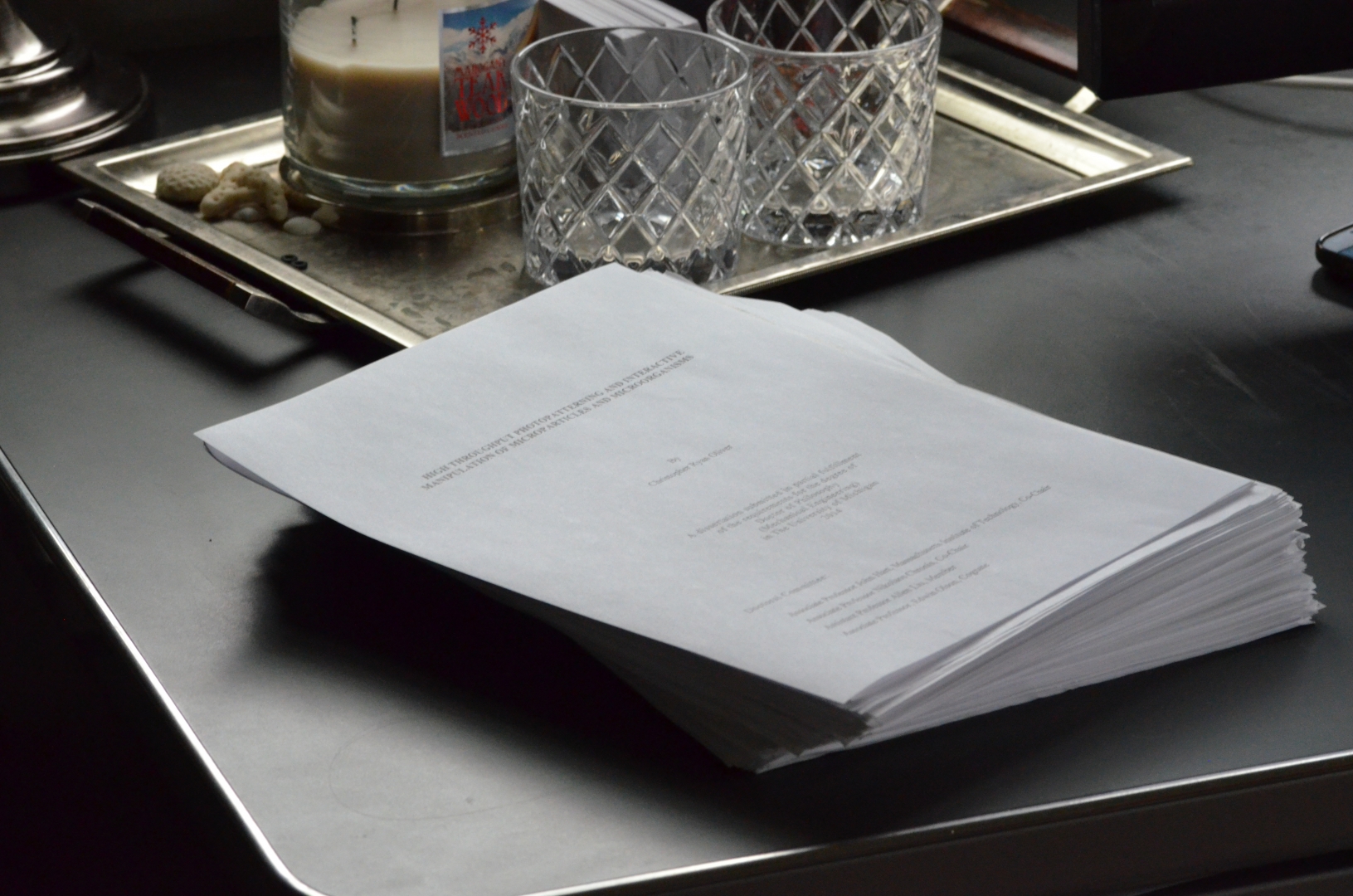Dear ME Faculty and Grad Students,
Christopher “Ryan” Oliver will defend his dissertation entitled “DIRECT-WRITE MANUFACTURING AND MANIPULATION OF MICROPARTICLES, OBJECTS AND ORGANISMS” (see attached abstract), on Thursday, November 6, 2014 at 1:00PM in 1180 R DC.
Dissertation Committee Chairs: John Hart and Nikolaos Chronis
ABSTRACT
DIRECT-WRITE MANUFACTURING AND MANIPULATION OF MICROPARTICLES, OBJECTS AND ORGANISMS
By
Christopher Ryan Oliver
Chair: Professor John Hart
Recent advances in soft material microfabrication technologies are enabling wide-ranging studies of cellular and organism behavior in vitro; however, these methods are generally time-consuming, challenging to implement by non-experts, are limited to planar features, and cannot be reconfigured within live environments. As a result, it is not possible to manufacture realistic artificial tissue constructs, nor to perform dynamic experimentation with model organisms.
This thesis describes an integrated hardware and software platform, based on micro-scale light shaping and high-speed machine vision algorithms, enabling real time, dynamic photo-patterning in response to microscale environmental changes. An optofluidic lithography system designed for the purpose of in-flow polymerization of hydrogel microstructures achieves diffraction limited resolution (r = 0.7µm) with a maximum distortion of the projection of 160nm. This enables continuous production of poly(ethylene-glycol) diacrylate(PEG-DA) microparticles (20-100?m, CoV5-15%). A new pillared microfluidic device design increased throughput up to 1500-fold, synthesizing particles per minute.
Biocompatibility of hydrogels was validated for model organism C. elegans, and hepatocytes Dynamic assays where structures are built during live cultue affirm that proximity of pillared structures increases the swimming speed of C. elegans and show that worm behavior can be influenced by sequential photopatterning of free-floating structures.
Next, custom software enables the use of machine vision to manipulate objects in flow, by photopolymer encapsulation in response to image-based decision events. We then evaluate the sensitivity, specificity, RMSE and computational time of candidate machine vision algorithms, and find the Speeded Up Robust Feature (SURF) method was the most robust though Thresholding was 3 orders of magnitude faster than SURF. Using this capability, we sort poly(styrene) micro particles by size via selective encapsulation (TPR=100% and SPC=99.999%, Mean error 4.7 pixels); and print patterns of hepatocyte aggregates with single cell resolution (<20µm) onto polymer substrates.
Last, the thesis describes the design and testing of a six-axis robotic dynamic lithography system for patterning large area curved surfaces and an automated CVD furnace for high throughput materials processing and discovery. Looking forward, this and other platforms combining micro- and nanofabrication processes with image-driven artificial intelligence algorithms could expand capabilities for scalable biofabrication and automation of science.







